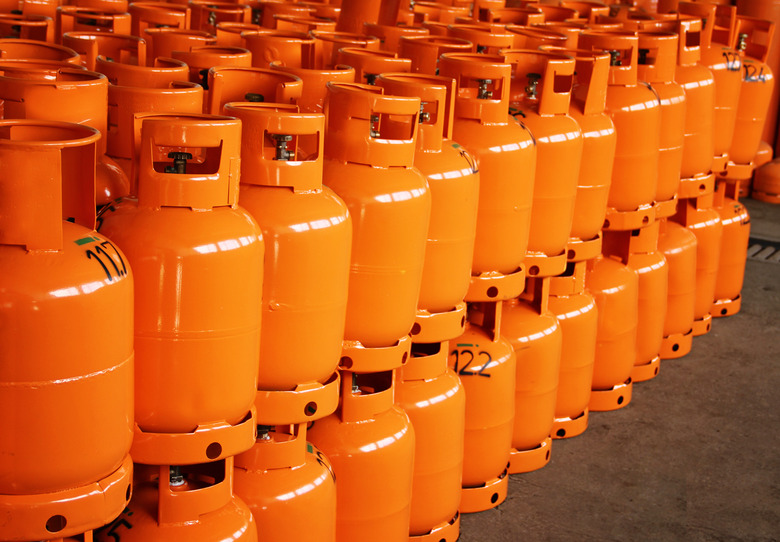How To Calculate The Volume Of A Cylinder In Ounces
The cylinder is one of geometry's most basic forms — essentially a series of circles stacked on top of each other. While geometric circles are two-dimensional (and thus have no "depth"), cylinder size in the physical world is calculated by assuming that each circle is one "unit" high. A measurement in fluid ounces is easy to calculate, requiring only one extra step beyond calculating volume in cubic inches.
Step 1
Measure the cylinder diameter in inches, then divide by two to derive the cylinder's radius. Multiply that radius by itself (i.e. square it) and then multiply by pi (3.141) to get the volume of a circle 1 inch high.
Step 2
Multiply the volume of that circle by the cylinder's height in inches to get the cylinder's displacement in cubic inches.
Step 3
Multiply the displacement in cubic inches by 0.554 to convert it to fluid ounces.
An Example Calculation
An Example Calculation
As an example, we'll calculate the ounce displacement of a cylinder measuring 3 inches across and 6 inches high. We'll first divide the diameter (3) by two to get the radius (equals 1.5), multiply this by itself (equals 2.25), and then multiply by 3.141 (equals 7.067).
Next, we'll multiply 7.067 by the cylinder's height (6) to derive the displacement in cubic inches (42.4). That displacement in cubic inches multiplied by 0.554 gives us a displacement in fluid ounces of 23.5.
References
- "Mechanical Engineers' Handbook"; Myer Kutz; 1998
Cite This Article
MLA
Rowe, Richard. "How To Calculate The Volume Of A Cylinder In Ounces" sciencing.com, https://www.sciencing.com/calculate-volume-cylinder-ounces-8481368/. 25 July 2019.
APA
Rowe, Richard. (2019, July 25). How To Calculate The Volume Of A Cylinder In Ounces. sciencing.com. Retrieved from https://www.sciencing.com/calculate-volume-cylinder-ounces-8481368/
Chicago
Rowe, Richard. How To Calculate The Volume Of A Cylinder In Ounces last modified March 24, 2022. https://www.sciencing.com/calculate-volume-cylinder-ounces-8481368/
